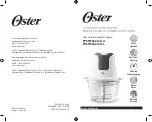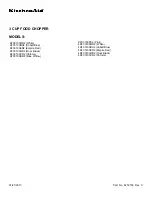HOST INTERFACE (HI)
5 - 18
PORT B
MOTOROLA
5.3.2.6
Host Interface DSP CPU Interrupts
The HI may request interrupt service from either the DSP or the host processor. The DSP
CPU interrupts are internal and do not require the use of an external interrupt pin (see Fig-
ure 5-11). When the appropriate mask bit in the HCR is set, an interrupt condition caused
by the host processor sets the appropriate bit in the HSR, which generates an interrupt
request to the DSP CPU. The DSP acknowledges interrupts caused by the host processor
by jumping to the appropriate interrupt service routine. The three possible interrupts are
1) receive data register full, 2) transmit data register empty, and 3) host command. The
host command can access any interrupt vector in the interrupt vector table although it has
a set of vectors reserved for host command use. The DSP interrupt service routine must
read or write the appropriate HI register (clearing HRDF or HTDE, for example) to clear
the interrupt. In the case of host command interrupts, the interrupt acknowledge from the
program controller will clear the pending interrupt condition.
5.3.2.7
Host Port Usage Considerations – DSP Side
Synchronization is a common problem when two asynchronous systems are connected,
and careful synchronization is required when reading multi-bit registers that are written by
another asynchronous system. The considerations for proper operation on the DSP CPU
side are discussed in the following paragraphs, and considerations for the host processor
Register
Name
Register
Data
Reset Type
HW
Reset
SW
Reset
IR
Reset
ST
Reset
HCR
HF(3 - 2)
0
0
—
—
HCIE
0
0
—
—
HTIE
0
0
—
—
HRIE
0
0
—
—
HSR
DMA
0
0
0
0
HF(1 - 0)
0
0
0
0
HCP
0
0
0
0
HTDE
1
1
1
1
HRDF
0
0
0
0
HRX
HRX (23 - 0)
—
—
—
—
HTX
HTX (23 - 0)
—
—
—
—
Table 5-1 Host Registers after
Reset–DSP CPU Side
F
re
e
sc
a
le
S
e
m
ic
o
n
d
u
c
to
r,
I
Freescale Semiconductor, Inc.
For More Information On This Product,
Go to: www.freescale.com
n
c
.
..


















